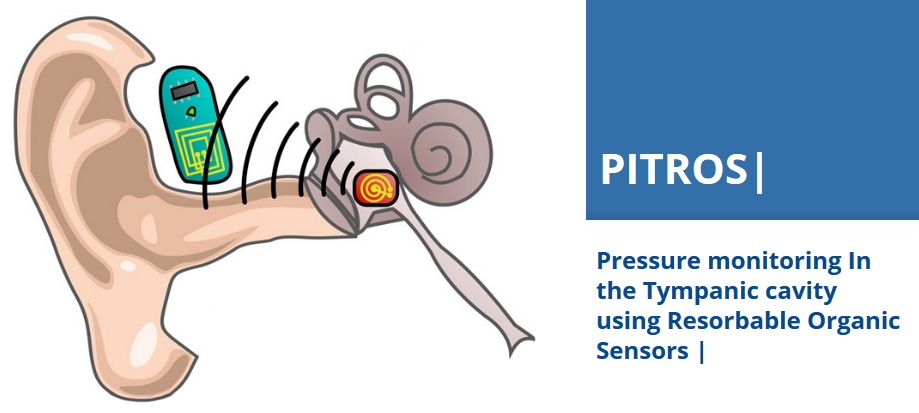
Newspaper article: "Mini-sensors in the ear save patients from surgery"
https://www.saechsische.de/wissenschaft/mini-sensoren-fuer-die-patienten-6026583.html
"Microscopically small, but revolutionary: Sensors for the middle ear"
Pressure sensors as a key to non-invasive therapy for ventilation disorders
Persistent ear pain can usually be alleviated with medication. However, sometimes ventilation disorders in the middle ear lead to hearing problems and chronic conditions that require surgery. According to Thomas Zahnert, Professor and Director of the Department of Otorhinolaryngology at the University Hospital Dresden, these surgeries are not always successful, especially when the ossicles or eardrum need to be replaced and the ventilation disorder persists.
An innovative approach could provide relief: a sensor that temporarily measures air pressure after surgery and signals to doctors when ventilation needs to be improved. However, this approach has been too risky and difficult to implement, as measurement was only possible using wired sensors that would have to be inserted through the eardrum. Additionally, this would require another surgery to remove the sensors. Therefore, researchers in the Bioelectronics Department at the Institute of Applied Physics at TU Dresden, together with the University ENT Clinic, are developing an implantable sensor that biodegrades and measures pressure directly in the ear, reports Thomas Zahnert.
Klara Hänisch has now made significant progress in this area. As part of a funded research project from 2019 to 2022, a mini-sensor on a gelatin substrate was developed, measuring two by four millimeters. It measures the pressure behind the eardrum and transmits the data wirelessly. Preliminary studies show that the sensor can detect pressure within the range of plus/minus 70 millibar, which is sufficient for the middle ear. For the sensor's development and surface improvement, a round vacuum evaporator was used in a cleanroom laboratory at the Hermann-Krone-Bau.
Klara Hänisch explains that tiny coils are integrated into the sensor to enable wireless communication. Due to its compact design, the sensor can be directly implanted into the middle ear and dissolves on its own within a few weeks, without causing complications. The sensor's gold contacts are biocompatible and do not cause allergies.
Future research could also explore more cost-effective, biodegradable materials like magnesium. However, the development of such sensors presents challenges, such as the small pressure changes in the ear and the integration of chips for local data analysis.
Despite these hurdles, Physics Professor and Director of the Institute of Applied Physics Karl Leo is optimistic. A significant step has been taken, but it will take until 2030 before the sensor can be used in surgeries. According to Dr. Zahnert, it may even take until 2040, as implementing such developments requires lengthy and extensive approval processes. The Else Kröner-Fresenius Center is funding the research with 200,000 euros to bring such innovative products to patient care more quickly.
Meanwhile, the researchers are also working on other applications, such as biodegradable sensors for use after intestinal, heart, and brain surgeries, and developing new transistor technologies for wireless communication and neural networks that aim to improve data analysis and patient care.


